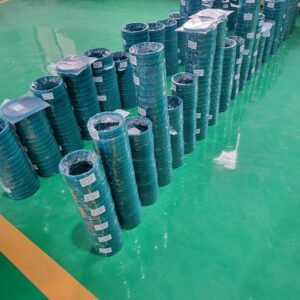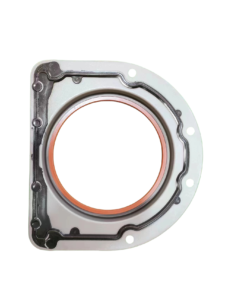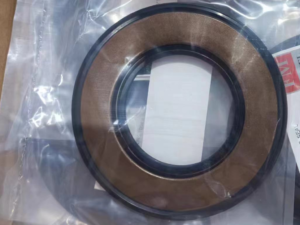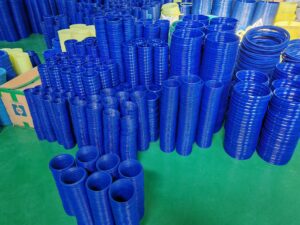Comprehensive Overview of Oil Ring Seals, Oil Seal Types, Crank Oil Seals, Hydraulic Oil Seals, and Pump Seal Oils: Best-Selling Models, Market Trends, Materials, and Pricing
Oil seals are critical components used across a wide range of industries to prevent leakage, reduce friction, and maintain pressure within machines. These seals are designed for various applications such as automotive engines, industrial machinery, and hydraulic systems. In this article, we will explore five key types of oil seals: oil ring seal, oil seal types, crank oil seal, hydraulic oil seal, and pump seal oil. We will delve into the best-selling models, materials, market trends, development, and pricing to provide a thorough understanding of each.



Table of Contents
Toggle1. Oil Ring Seal
Best-Selling Models: The oil ring seal is commonly used in internal combustion engines and other machinery to seal the area between rotating shafts and stationary parts. They are typically found in areas such as pistons and crankshafts to control oil consumption and prevent leakage. Some of the best-selling models include:
- SKF 16130: A popular choice for automotive and industrial applications, offering robust sealing performance.
- National 8602: Commonly used in heavy-duty engines and industrial machinery.
- Timken 3870: Used for its durability and excellent sealing capabilities in rotating shafts.
Market: The oil ring seal market is heavily influenced by the automotive industry, where they are used in internal combustion engines. The heavy machinery and industrial sectors also contribute significantly to the market demand, especially in hydraulic systems and compressor systems. As engine technology advances and machinery becomes more sophisticated, the demand for more durable and high-performance oil ring seals is on the rise.
Materials: Oil ring seals are typically made from materials such as:
- Nitrile Rubber (NBR): Commonly used due to its excellent oil resistance.
- Fluorocarbon Rubber (FKM): For higher performance, chemical resistance, and durability at elevated temperatures.
- Polyurethane (PU): Known for its high abrasion resistance and ability to handle more aggressive conditions.
Development Trends: The trend in the oil ring seal market is toward producing seals that can handle higher pressures, temperature extremes, and more demanding chemicals. With the rise of electric vehicles (EVs), there is a push for seals that can perform under different types of coolants and lubricants. Additionally, the focus is shifting towards sustainability, with manufacturers exploring eco-friendly materials that meet environmental standards.
Pricing: Oil ring seals typically range from $3 to $15, depending on the application, size, and material.
2. Oil Seal Types
Best-Selling Models: There are various types of oil seals used in different applications, including radial seals, lip seals, and others. Some of the best-selling models for different oil seal types include:
- SKF 16714: A widely used radial oil seal for automotive and industrial applications.
- National 710207: A popular lip-type seal, known for its excellent performance in sealing shaft openings.
- Timken 3870: A radial oil seal commonly used in high-pressure hydraulic systems and industrial equipment.
Market: The market for oil seal types spans a wide range of industries, including automotive, aerospace, oil and gas, and hydraulic machinery. As industrial applications become more complex and machinery operates under more extreme conditions, the demand for advanced sealing solutions is increasing. OEMs and aftermarket suppliers often rely on specific types of seals for applications requiring either high flexibility, high temperature resistance, or the ability to resist harsh chemicals.
Materials: The most common materials for oil seals are:
- Nitrile Rubber (NBR): Ideal for general-purpose sealing in automotive, industrial, and hydraulic applications.
- Fluorocarbon Rubber (FKM): Preferred for seals that must withstand high temperatures and chemical environments.
- Polyurethane (PU): Used in high-wear applications requiring abrasion resistance.
Development Trends: The development of oil seal types is moving toward higher performance materials that can handle higher pressures, extreme temperatures, and chemical exposure. The automotive industry’s shift to electric and hybrid vehicles is pushing for seals that are compatible with new coolant types, while digital tools are making it easier for engineers to select the right seal type for each application.
Pricing: Depending on the type and material, oil seals typically cost between $3 and $25. High-performance seals, especially for heavy-duty or specialized applications, may cost more.
3. Crank Oil Seal
Best-Selling Models: The crank oil seal plays a vital role in sealing the area around the crankshaft to prevent oil leakage. It is commonly used in engines, both in vehicles and industrial machinery. Popular models include:
- National 710105: A reliable choice for automotive and small engine applications.
- SKF 16714: Widely used in automotive and industrial applications to seal the crankshaft.
- Fel-Pro BS 40600: Known for its durability and use in high-performance automotive engines.
Market: The crank oil seal market is primarily driven by the automotive sector, where engines require seals to prevent oil leakage from the crankshaft area. Heavy-duty machinery, including construction equipment and agricultural machinery, also represents a significant portion of the demand for crank oil seals, especially those made from high-durability materials that can handle rough operating conditions.
Materials: Crank oil seals are often made from:
- Nitrile Rubber (NBR): Ideal for automotive applications due to its oil resistance and durability.
- Fluorocarbon Rubber (FKM): Used for seals that must withstand high temperatures and aggressive chemicals.
- Polyurethane (PU): Known for excellent wear resistance, particularly in heavy-duty applications.
Development Trends: As engines evolve, there is a growing focus on producing crank oil seals that can withstand higher operating temperatures and increased pressures. The development of electric and hybrid vehicles has led to new designs that must perform with different lubricants and coolants. Additionally, advancements in 3D printing and material science are enabling more customized and efficient seal designs.
Pricing: Crank oil seals generally range from $5 to $20, depending on the brand, material, and application.
4. Hydraulic Oil Seal

Best-Selling Models: The hydraulic oil seal is crucial for preventing fluid leakage in hydraulic systems, and it is used across various industries, including construction, mining, and manufacturing. Popular hydraulic oil seal models include:
- SKF 3126: A high-performance hydraulic seal commonly used in industrial machinery and heavy-duty equipment.
- National 710207: A durable and reliable seal, popular in automotive and hydraulic applications.
- Timken 400231: A popular choice for sealing hydraulic systems in construction and industrial equipment.
- UN Oil Seal 900100: Widely used in heavy-duty hydraulic systems, providing excellent resistance to pressure and temperature.
- UR UN Oil Seal 400320: Known for its high resistance to both abrasion and extreme pressures, often used in industrial and mobile machinery.
- KDAS Oil Seal 300520: Preferred for hydraulic systems that require high wear resistance and performance under fluctuating temperatures.
- SPGW Oil Seal 1012: A popular choice for sealing hydraulic pumps in high-temperature environments.
- JA Oil Seal 7520: Used in applications requiring low friction and high sealing efficiency.
- DKBI Oil Seal 5035: Known for its resistance to oil and temperature, often used in industrial applications.
Market: The hydraulic oil seal market continues to grow, driven by sectors such as construction, mining, aerospace, and industrial manufacturing, where hydraulic systems are essential. The demand for hydraulic oil seals is expanding as industries require more efficient and reliable sealing solutions for high-pressure systems. The rise of automation and smart manufacturing also contributes to the growth of this market. Hydraulic seals are particularly critical for hydraulic pumps, motors, and valves, ensuring smooth operation and preventing costly fluid leakage.
Materials: Hydraulic oil seals are made from a variety of materials depending on the demands of the specific application:
- Nitrile Rubber (NBR): The most commonly used material for hydraulic oil seals due to its excellent resistance to oil and hydraulic fluids.
- Polyurethane (PU): Known for its high abrasion resistance and ability to withstand higher pressure, making it suitable for heavy-duty hydraulic systems. Polyurethane offers superior wear resistance and is increasingly popular in industrial applications, especially in systems subject to frequent cycles and extreme conditions. It is ideal for applications where long service life and resistance to wear are required.
- Fluorocarbon Rubber (FKM): Ideal for use in high-temperature and chemically aggressive hydraulic systems, as it provides superior chemical resistance.
- EPDM (Ethylene Propylene Diene Monomer): Often used in hydraulic systems that require resistance to high temperatures and steam.
Development Trends: The trend in hydraulic oil seals is toward creating seals that are able to handle higher pressures and more aggressive fluids, with an increasing emphasis on sustainability. As industrial machinery evolves, hydraulic oil seals are being developed to withstand extreme conditions, including high temperatures and volatile chemicals. The growing use of polyurethane in seals for its durability and resistance to wear is particularly notable in industries such as automotive and mining. Moreover, the rise of electric vehicles (EVs) and smart machinery is driving the development of seals that can work with new types of lubricants and coolants. Additionally, there is a push for the development of eco-friendly materials that meet increasing environmental regulations while still providing the high performance required by industrial hydraulic systems.
Pricing: Hydraulic oil seals typically range from $5 to $25, with premium models (such as those made from polyurethane or fluorocarbon rubber) potentially costing more. Specialized seals for high-pressure, high-temperature, or chemical-resistant applications can exceed $50. The price varies based on factors like material, size, and the specific requirements of the application.
5. Pump Seal Oil
Best-Selling Models: The pump seal oil is essential in sealing pump components to prevent oil leaks and ensure proper operation in various pumps, including centrifugal pumps, gear pumps, and piston pumps. Some best-selling models include:
- SKF 41000: A widely used pump seal oil for centrifugal pumps in industrial applications.
- National 710105: A popular choice for automotive and industrial pumps.
- Timken 41000: Known for its durability and resistance to high pressures and temperatures in pumping systems.
Market: The pump seal oil market is heavily influenced by the industrial machinery, chemical processing, and automotive industries. As industries continue to require more efficient and durable pumps, the demand for advanced sealing solutions has increased. The growing trend of smart manufacturing and automation is also contributing to the increased need for high-quality seals in pump systems.
Materials: Pump seals are often made from:
- Nitrile Rubber (NBR): Commonly used for sealing pumps that handle oils and water.
- Fluorocarbon Rubber (FKM): Ideal for high-temperature and chemically resistant pump applications.
- EPDM (Ethylene Propylene Diene Monomer): Often used for sealing pumps in environments where temperature extremes and chemical exposure are concerns.
Development Trends: The focus in the pump seal oil market is on improving sealing efficiency, pressure tolerance, and durability. Additionally, with the growth of automation and sustainability initiatives, manufacturers are working to develop eco-friendly seals that are compatible with the modern lubricants and chemicals used in industrial systems.
Pricing: Pump seal oils typically range from $3 to $15, depending on the material, size, and specific application.
Conclusion
The market for oil ring seals, oil seal types, crank oil seals, hydraulic oil seals, and pump seal oils is diverse and growing. As industries continue to evolve with advancements in technology, there is an increasing demand for higher-performance seals capable of withstanding extreme temperatures, pressures, and chemical environments. With an emphasis on durability, sustainability, and customization, these seals play a crucial role in ensuring the smooth operation of machinery and preventing costly leaks or failures. The pricing for these seals varies based on materials, application, and performance requirements, but overall, they remain an essential investment in industrial operations worldwide.



Leave A Comment